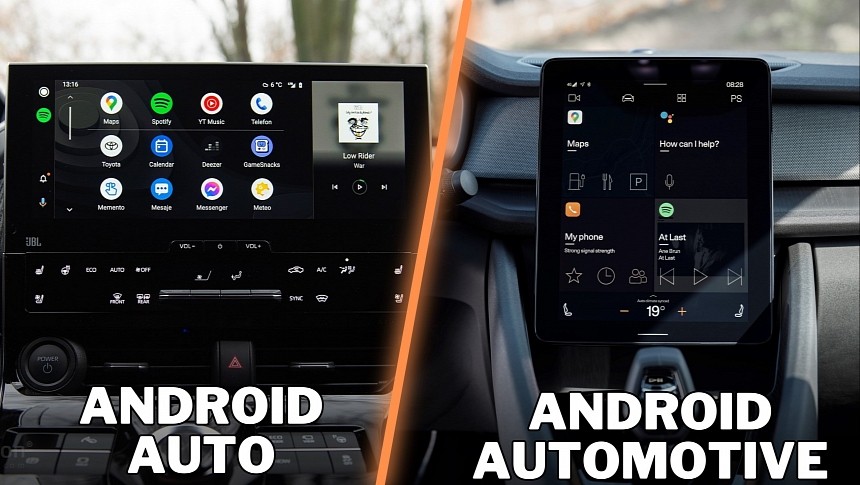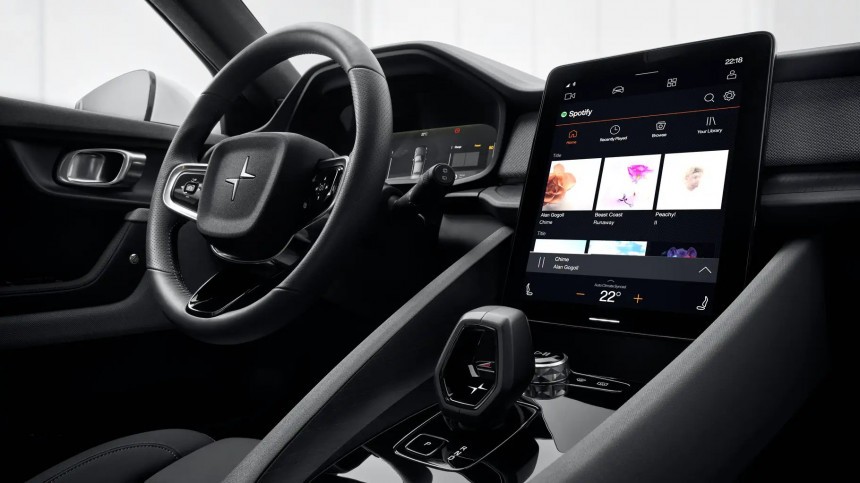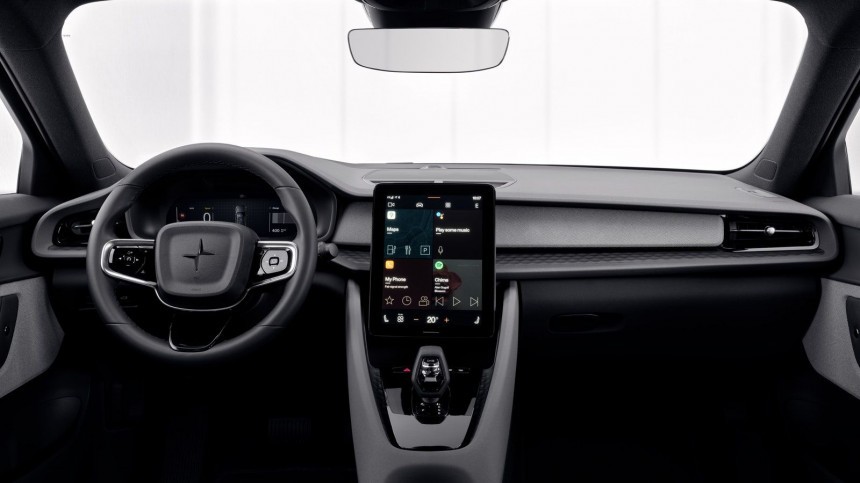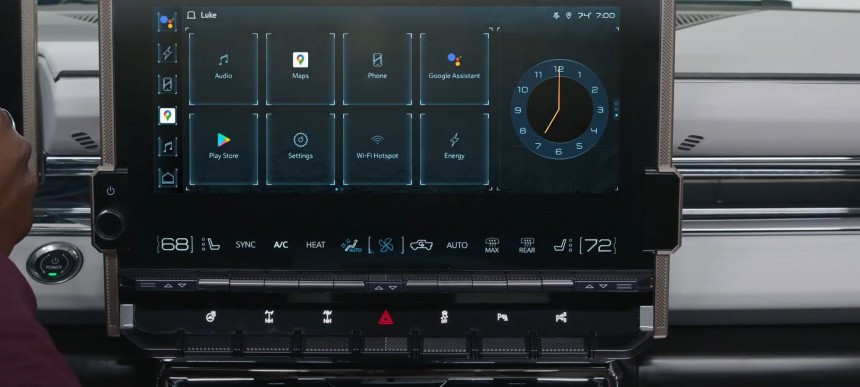Google tries to conquer the automotive world in two different ways. While long-time Apple rival is now building a car from scratch, the search giant wants to rely exclusively on software and services to make itself noticed in an industry focused more and more on technology.
Google's top offerings in this side of the market are Android Auto and Android Automotive.
Sure enough, the naming could be a little confusing, and I'm not surprised when I see people referring to Android Automotive as Android Auto or the other way around.
Google picked very similar names despite Android Auto and Android Automotive serving as two different products.
Android Auto is a mobile phone projection system, and all its features are powered by the mobile device connected to the head unit, either with a cable or wirelessly.
Android Automotive is the operating system that powers the infotainment system and is installed from the factory by your carmaker. It doesn’t require anything else to run, as you get access to the pre-loaded apps out of the box. Internet access is required for certain capabilities and the installation of apps.
Despite the close naming resemblance, Android Auto and Android Automotive also have different purposes. The first is more like an extension of your phone, while the latter is primarily a separate device from the one in your pocket. For example, you can use Android Automotive even if you have an iPhone, but for Android Auto, you must have an Android smartphone.
For example, thanks to the integration of GAS, Android Automotive has access to more vehicle data and offers features that aren’t otherwise available on Android Auto. The system can read the battery range and then suggest charging stops in Google Maps whenever required.
Android Auto doesn’t currently have access to vehicle data, so you get pretty much the same feature package that apps offer on the mobile device. Google Maps sports the standard navigation, while Google Assistant does the same things as on the smartphone.
So why is Android Auto the better option at the end of the day?
The answer comes down to product maturity. Android Automotive isn't there yet. Android Auto feels like the more polished and refined platform (I know, Android Auto isn't exactly refined from a stability and reliability perspective, but it does offer an overall rounded experience compared to Android Automotive).
Android Automotive is still in its early days, and most carmakers are still very reluctant when it comes to installing it in their cars. This is one of the reasons some companies aren’t necessarily excited about adopting it – BMW, for instance, wants to use Android Automotive without GAS, therefore blocking Google from accessing its vehicle data.
But on the other hand, Android Auto is much easier to use. And this is why I like it more than Android Automotive.
With Android Auto, I have everything on my phone. My data is always with me, and I can take it wherever I go. I plug in my smartphone to the vehicle for an extra charge whenever I get behind the wheel anyway, so why not run Android Auto as well? Furthermore, just like BMW, I'm not necessarily excited with the prospect of having all my vehicle data uploaded to Google – sure enough, most of it is already available for the search giant via Android Auto, but as I said, the actual car information can't be read just yet.
Using Android Auto just feels more convenient right now, while Android Automotive sometimes lacks important features and capabilities. Depending on the automaker, some essential options might never be offered, as companies are in full control of what they want to offer to drivers. With Android Auto, everything is there for everybody.
Google gives carmakers the option to customize the look and feature lineup of Android Automotive specifically to let them retain their brand identity. But at the same time, this also gives them the opportunity of restricting certain features, eventually impacting the user experience quite significantly.
Android Auto is always there with the same capabilities for everybody. You plug in your phone and start driving. If everything works properly, you also get an extra charge, arrive at the destination, and disconnect the phone, taking everything with your anyway. Oh, and getting Android Auto in your car is a lot cheaper. And you won't have to buy a new car.
Sure enough, the naming could be a little confusing, and I'm not surprised when I see people referring to Android Automotive as Android Auto or the other way around.
Google picked very similar names despite Android Auto and Android Automotive serving as two different products.
The difference between the two
You should first know that Android Auto requires a phone to run, whereas Android Automotive is installed at the hardware level. More often than not, you'll see Android Auto being referred to as AA, while Android Automotive is also called AAOS.Android Auto is a mobile phone projection system, and all its features are powered by the mobile device connected to the head unit, either with a cable or wirelessly.
Android Automotive is the operating system that powers the infotainment system and is installed from the factory by your carmaker. It doesn’t require anything else to run, as you get access to the pre-loaded apps out of the box. Internet access is required for certain capabilities and the installation of apps.
Despite the close naming resemblance, Android Auto and Android Automotive also have different purposes. The first is more like an extension of your phone, while the latter is primarily a separate device from the one in your pocket. For example, you can use Android Automotive even if you have an iPhone, but for Android Auto, you must have an Android smartphone.
Why is Android Auto the better choice?
At first glance, Android Automotive is by far the better option. It doesn’t require a mobile device, so using it is way more convenient and offers more advanced capabilities than Android Auto.For example, thanks to the integration of GAS, Android Automotive has access to more vehicle data and offers features that aren’t otherwise available on Android Auto. The system can read the battery range and then suggest charging stops in Google Maps whenever required.
Android Auto doesn’t currently have access to vehicle data, so you get pretty much the same feature package that apps offer on the mobile device. Google Maps sports the standard navigation, while Google Assistant does the same things as on the smartphone.
So why is Android Auto the better option at the end of the day?
The answer comes down to product maturity. Android Automotive isn't there yet. Android Auto feels like the more polished and refined platform (I know, Android Auto isn't exactly refined from a stability and reliability perspective, but it does offer an overall rounded experience compared to Android Automotive).
Android Automotive is still in its early days, and most carmakers are still very reluctant when it comes to installing it in their cars. This is one of the reasons some companies aren’t necessarily excited about adopting it – BMW, for instance, wants to use Android Automotive without GAS, therefore blocking Google from accessing its vehicle data.
With Android Auto, I have everything on my phone. My data is always with me, and I can take it wherever I go. I plug in my smartphone to the vehicle for an extra charge whenever I get behind the wheel anyway, so why not run Android Auto as well? Furthermore, just like BMW, I'm not necessarily excited with the prospect of having all my vehicle data uploaded to Google – sure enough, most of it is already available for the search giant via Android Auto, but as I said, the actual car information can't be read just yet.
Using Android Auto just feels more convenient right now, while Android Automotive sometimes lacks important features and capabilities. Depending on the automaker, some essential options might never be offered, as companies are in full control of what they want to offer to drivers. With Android Auto, everything is there for everybody.
Google gives carmakers the option to customize the look and feature lineup of Android Automotive specifically to let them retain their brand identity. But at the same time, this also gives them the opportunity of restricting certain features, eventually impacting the user experience quite significantly.
Android Auto is always there with the same capabilities for everybody. You plug in your phone and start driving. If everything works properly, you also get an extra charge, arrive at the destination, and disconnect the phone, taking everything with your anyway. Oh, and getting Android Auto in your car is a lot cheaper. And you won't have to buy a new car.













